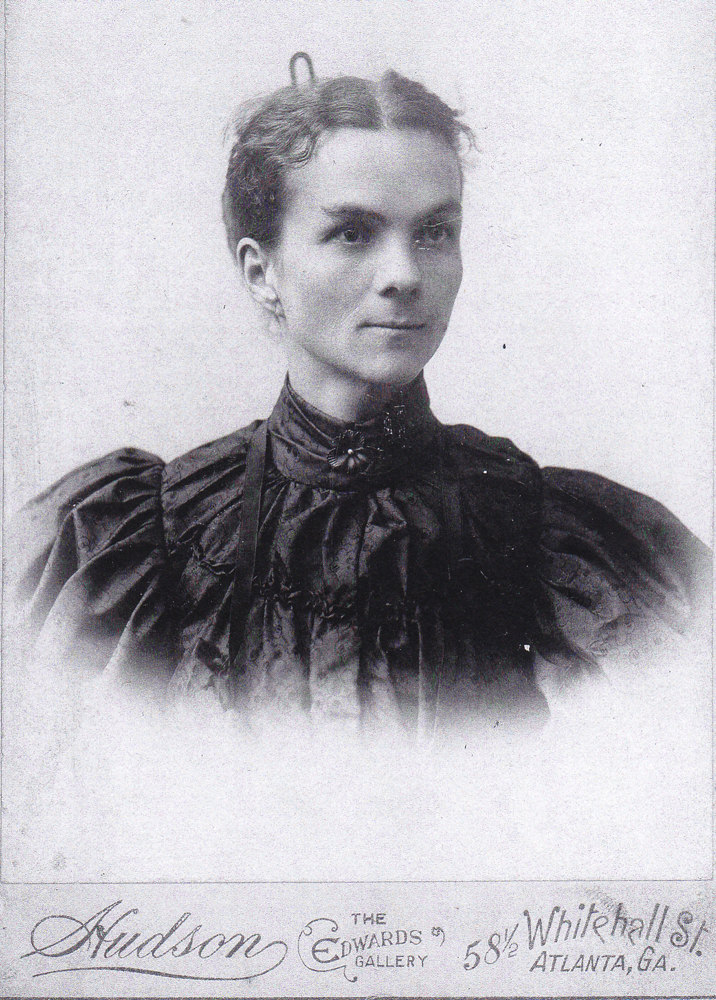Adella Hunt LoganPosted in Articles, Biography, History, Media Archive, Passing, United States, Women on 2019-10-01 21:09Z by Steven |
Harvard Magazine
September-October 2019
Adele Logan Alexander, Emeritus Professor of History
George Washington University, Washington, D.C.
 Hunt Logan in June 1901, after earning her “honorary” master’s degree from Atlanta University Collection of the author; reproduction photograph by Mark Gulezian |
Historian Adele Logan Alexander ’59 is Adella Hunt Logan’s only granddaughter. Her family memoir Princess of the Hither Isles: A Black Suffragist’s Story from the Jim Crow South (Yale), appears this month. The portrait of Hunt Logan opposite, by the Parisian-trained, African-American painter William Edouard Scott, was begun in 1915 while he was in residence at Tuskegee and completed at her daughter’s direction in 1918.
Brief life of a rebellious black suffragist: 1863-1915
Soon after meeting Susan B. Anthony in 1895 at a convention of the National-American Woman Suffrage Association (N-AWSA) in Atlanta, Adella Hunt Logan wrote to the suffragist leader, “I am working with women who are slow to believe that they will get help from the ballot, but someday I hope to see my daughter vote right here in the South.” She strove to spur often frightened or otherwise reluctant black women to political action through gaining access to the ballot; she lobbied for equal pay as well, and ultimately espoused women’s reproductive rights.
The letter and Hunt Logan herself were virtually unique, because in her own eyes, and as specified by law, she was “a Negro.” Due to her predominantly Caucasian ancestry, however (both her mother and her black-Cherokee-white maternal grandmother maintained longstanding, consensual relationships with slaveholding white men), Hunt Logan herself looked white. As an adult, she occasionally “passed” to travel on the Jim Crow South’s railways, and to attend segregated political gatherings, such as the N-AWSA’s, from which she brought suffrage tactics and materials back to share with her own people. At the time, she was the N-AWSA’s only African-American lifetime member, and the only such member from ultraconservative Alabama, where she lived with her husband, Warren Logan, and their children, and taught for three decades at Booker T. Washington’s Tuskegee Institute, the agricultural and industrial school for black Southerners that drew such prominent visitors as Frederick Douglass, Presidents William McKinley and Theodore Roosevelt, and philanthropists Andrew Carnegie and Julius Rosenwald….
Read the entire article here.

